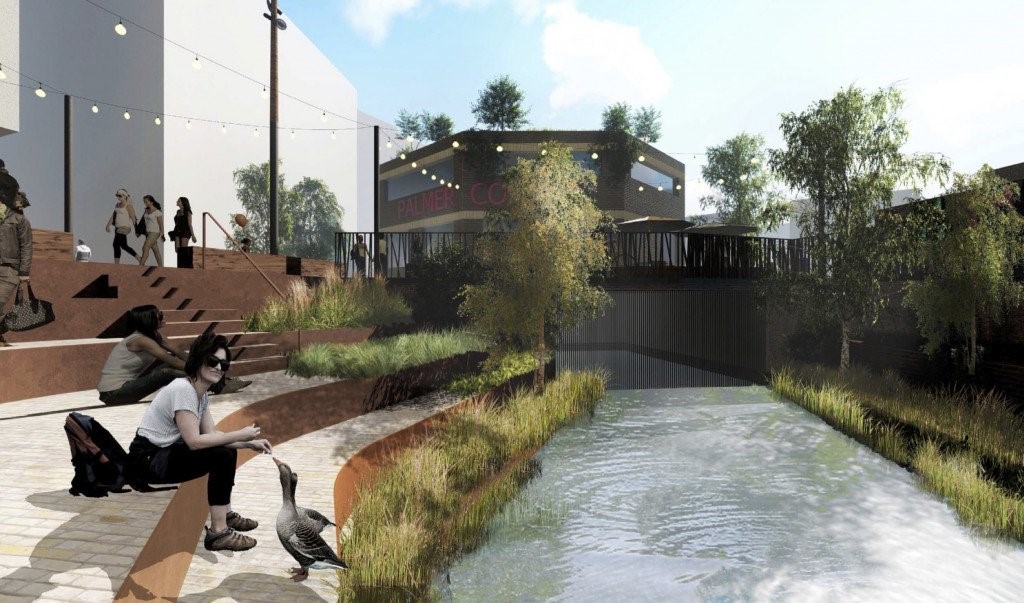Coventry Historian and CovSoc member, David Fry, continues his analysis about the streets around Broadgate. David writes…..
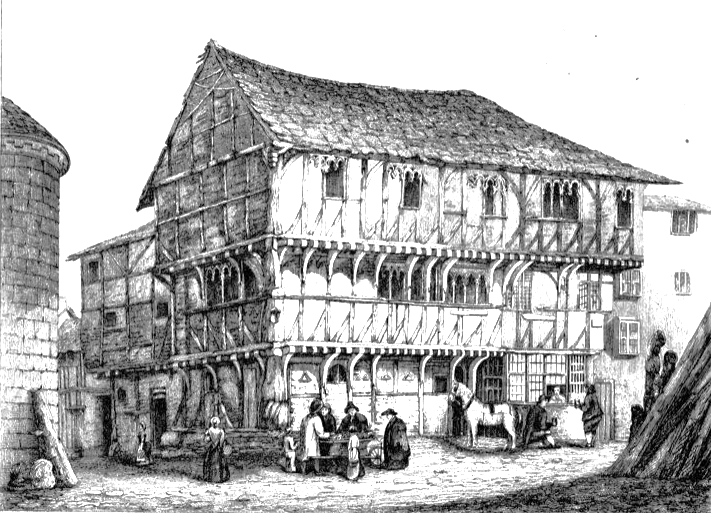
A recent article described the blitzing of the old medieval Broadgate in 1820 to allow the widening of that street. In the same year one of the most outstanding architectural survivors from Coventry’s medieval past was also demolished.
Originally known as the Benedictine or Priory Guest House it was located on the corner of Palmer Lane and Ironmonger Row, later becoming a hostelry called the Pilgrims Inn or Pilgrims Rest, There are no obvious clues to its location today but if you stand in Ironmonger Row with your back to Primark there is a multi-coloured student accommodation building above some shops. The old structure would have been just behind this building.
The Benedictine Guest House dated from the thirteenth century, though the extension behind was added in the seventeenth. The building was perfectly situated to house pilgrims who had come to visit the nearby Benedictine Monastery with all its various relics that would have been venerated by the visitors. More prestigious visitors would be accommodated in special lodgings within the monastic precinct.
The dissolution of the monasteries in the sixteenth century ended this lucrative tourist trade and Coventry went into a steady decline for a few centuries. Such a large building was now rather out of place and its demolition was supposedly due to its decrepit state.
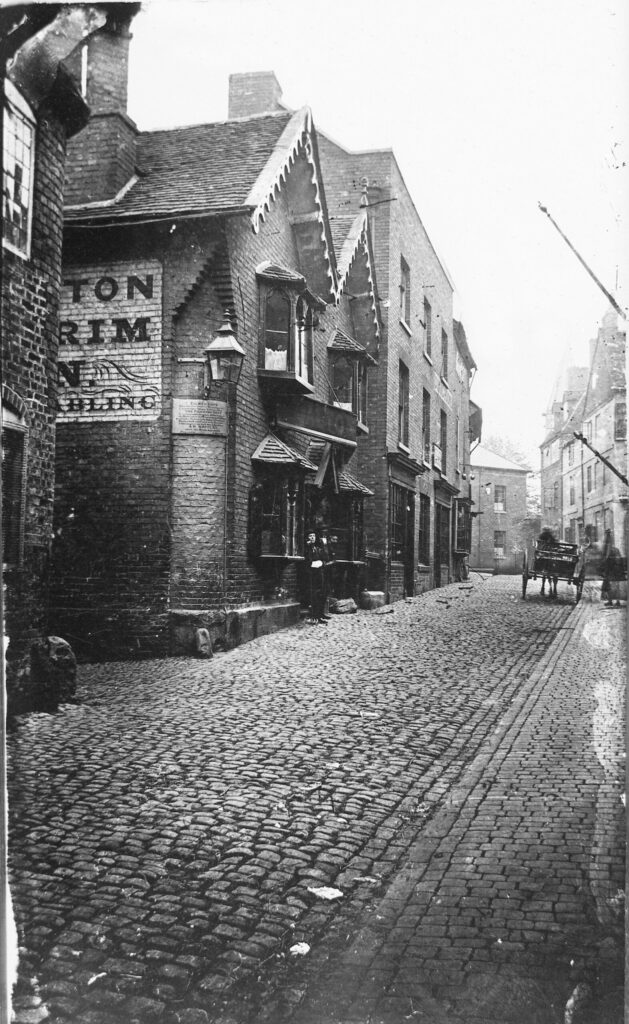
A new public house was erected on the site. The Pilgrims Inn, as it was now called (later named Pilgrims Rest) survived until 1936 when it was demolished to make way for the new Trinity Street. Apparently some parts of the old building had been incorporated into the replacement as older architectural elements were discovered as it was taken down. The 1860s Wingrave photograph (left) shows Ironmonger Row looking up towards the junction with New Buildings and the Bull Ring leading to Butcher Row. Just before the pub is the junction with Palmer Lane. Palmer is another name for a pilgrim who had been to the Holy Land and brought back a palm leaf as proof.
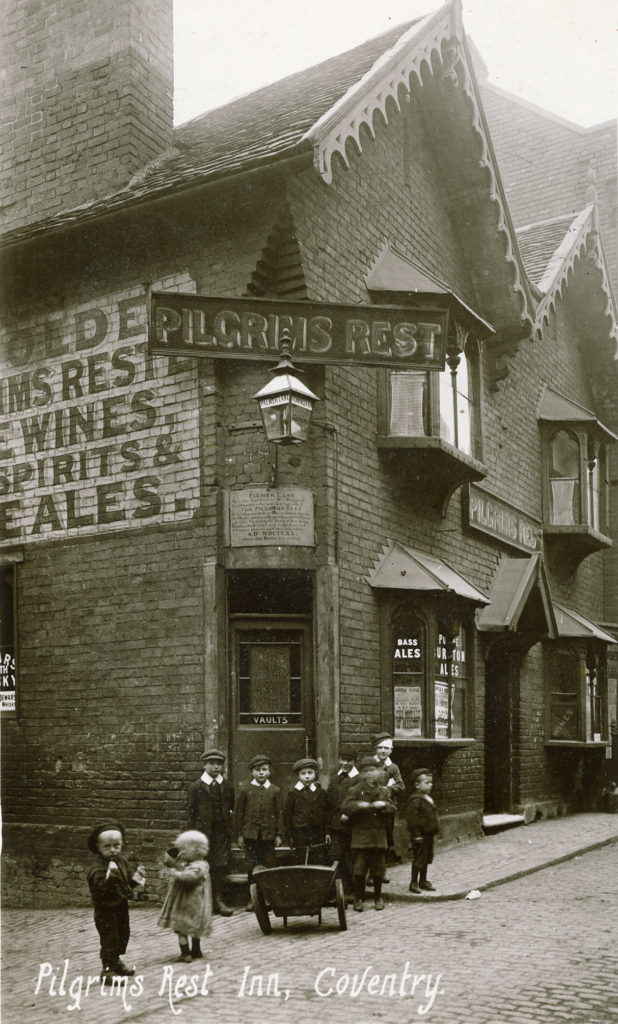
Just above the door can be seen an inscription, enlarged above. Unfortunately no amount of Photoshopping can make it any clearer.
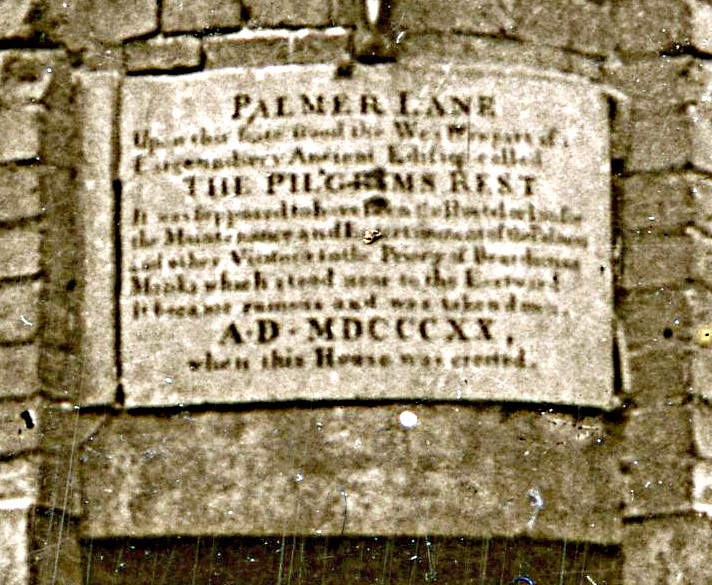
It says:

It’s reassuring to know that sometime soon Palmer Lane, with all its evocative associations with Coventry’s medieval past, will no longer be hiding away in a neglected corner of the city centre. Thanks to the work of the Historic Coventry Trust new consumer pilgrims will be taking rest and refreshment in this ancient spot. I wonder if there is an opportunity here for remembering the pilgrims that passed this way before and/or the old Pilgrims Rest?
